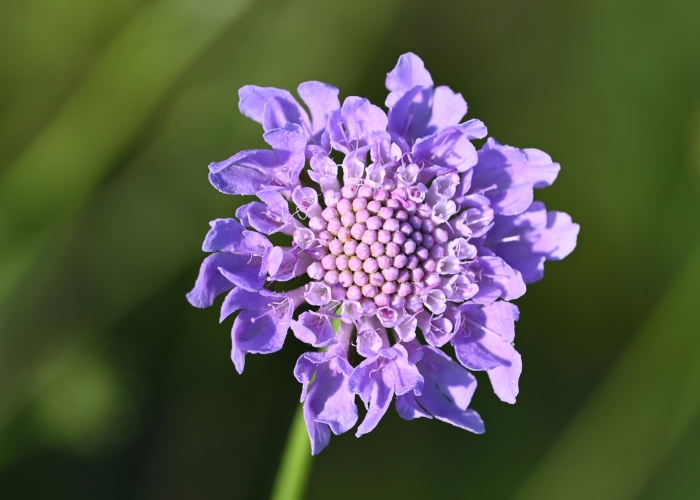Dwarf Pincushion Flower
(Scabiosa columbaria)
Dwarf Pincushion Flower (Scabiosa columbaria)
/
/

Krzysztof Ziarnek, Kenraiz
CC BY-SA 4.0











































































Estimated Native Range
Summary
Dwarf Pincushion Flower is valued for its extended flowering period and its ability to attract pollinators such as bees and butterflies. It is commonly used in borders, rock gardens, and as a ground cover. It thrives in full sun to part shade and prefers well-drained soil, though it tolerates a range of soil types. Regular deadheading encourages continuous bloom. While generally easy to maintain, it can be susceptible to powdery mildew and root rot if overwatered or planted in poorly drained soils.CC BY-SA 4.0
Plant Description
- Plant Type: Herb
- Height: 1-2 feet
- Width: 1-2 feet
- Growth Rate: Moderate
- Flower Color: Pink, Purple, White
- Flowering Season: Spring, Summer, Fall
- Leaf Retention: Evergreen
Growth Requirements
- Sun: Full Sun, Part Shade
- Water: Medium
- Drainage: Medium
Common Uses
Bee Garden, Bird Garden, Border Plant, Butterfly Garden, Deer Resistant, Drought Tolerant, Edible*Disclaimer: Easyscape's listed plant edibility is for informational use. Always verify the safety and proper identification of any plant before consumption., Fragrant, Groundcover, Hummingbird Garden, Low Maintenance, Potted Plant, Rabbit Resistant, Rock Garden, Salt Tolerant, Showy Flowers, Street Planting
Natural Habitat
Rocky slopes and open woodlands
Other Names
Common Names: Dove Pincushions, Small Scabious, Pigeon’s Scabious, Yellow Scabious, Due-Skabiose, Taubenskabiose, Tauben-Skabiose, Gewöhnliche Tauben-Skabiose, Kivikkotörmäkukka, Colombaire
Scientific Names: , Scabiosa columbaria, Scabiosa crenata, Scabiosa communis, Scabiosa balbinii, Scabiosa vogesiaca, Scabiosa purpurea, Scabiosa levieri, Scabiosa longicincta, Scabiosa subalpina
GBIF Accepted Name: Scabiosa columbaria L.